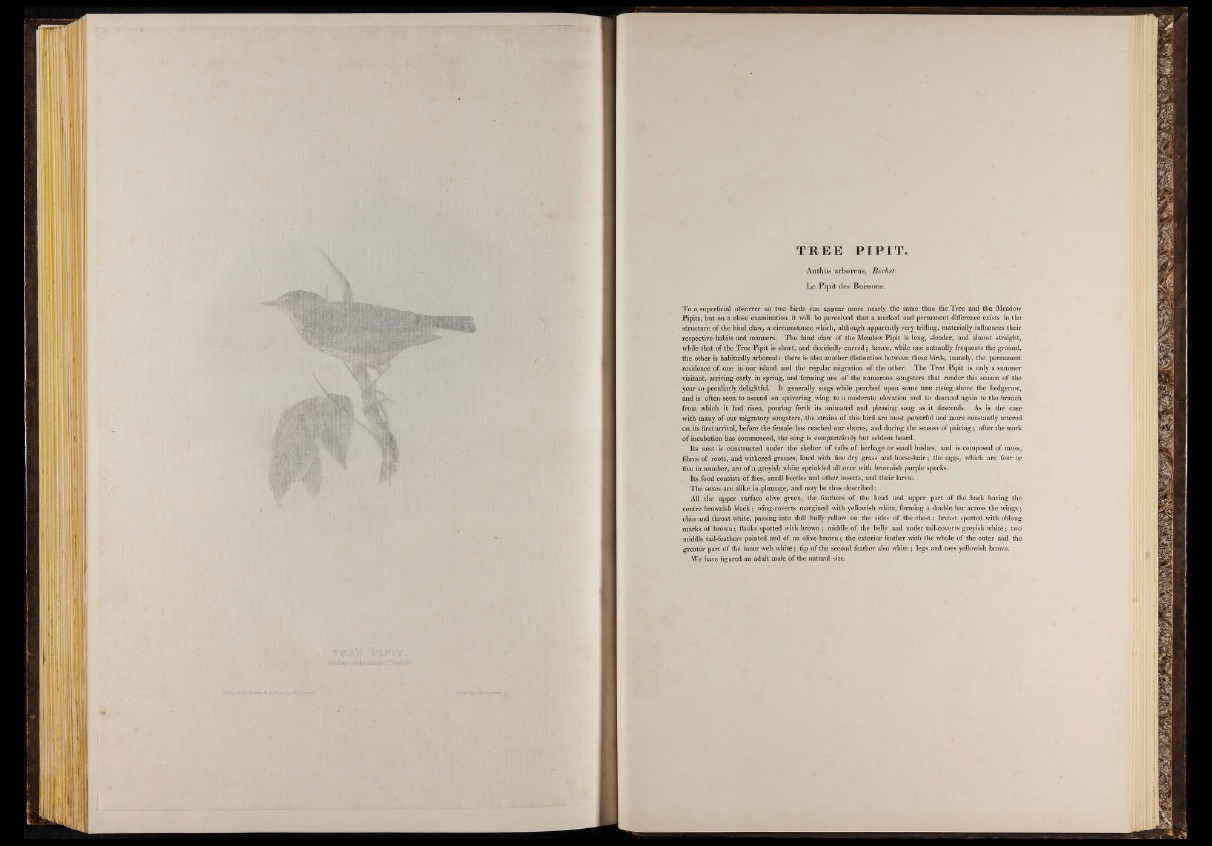
ISiffe
i § l j i
fit
1
JP
y i
T R E E P I P IT .
Anthiis arboreus, JBechst.
Le Pipit des Buissons.
To a superficial observer no two birds can appear more nearly the same than the Tree and the Meadow
Pipits, but on a close examination it will be perceived that a marked and permanent difference exists in the
structure of the hind claw, a circumstance which, although apparently very trifling, materially influences their
respective habits and manners. The hind claw of the Meadow Pipit is long, slender, and almost straight,
while that of the Tree Pipit is short, and decidedly curved; hence, while one naturally frequents the ground,
the other is habitually arboreal: there is also another distinction between these birds, namely, the permanent
residence of one in our island and the regular migration of the other. The Tree Pipit is only a summer
visitant, arriving early in spring, and forming one of the numerous songsters that render this season of the
year so peculiarly delightful.' It generally sings while perched upon some tree rising above the hedgerow,
and is often seen to ascend on quivering wing to a moderate elevation and to descend again to the branch
from which it had risen, pouring forth its animated and pleasing song as it descends. As is the case
with many of our migratory songsters, the strains of this bird are most powerful and more constantly uttered
on its first arrival, before the female has reached our shores, and during the season of pairing; after the work
of incubation has commenced, the song is comparatively but seldom heard.
Its nest is constructed under the shelter of tufts of herbage or small bushes, and is composed of moss,
fibres of roots, and withered grasses, lined with fine dry grass and horse-hair; the eggs, which are four or
five in number, are of a greyish white sprinkled all over with brownish purple specks.
Its food consists of flies, small beetles and other insects, and their larvae.
The sexes are alike in plumage, and may be thus described:
All the upper surface olive green, the feathers of the head and. upper part of the back having the
centre brownish black; wing-coverts margined with yellowish white, forming a double bar across the wings;
chin and throat white, passing into dull buffy yellow on the sides of the chest; breast spotted with oblong
marks of brown; flanks spotted with brown ; middle of the belly and under tail-coverts greyish white; two
middle tail-feathers pointed and of an olive brown; the exterior feather with the whole of the outer and the
greater part of the inner web white; tip of the second feather also white; legs and toes yellowish brown.
We have figured an adult male of the natural size.